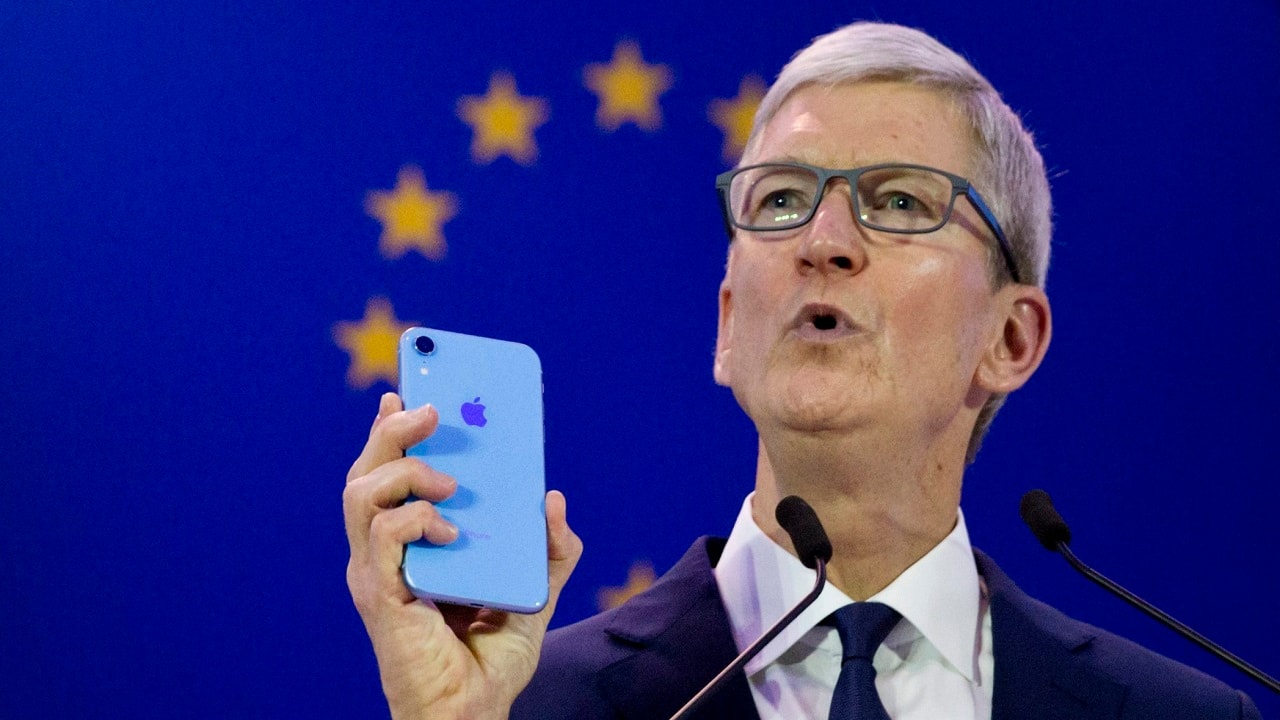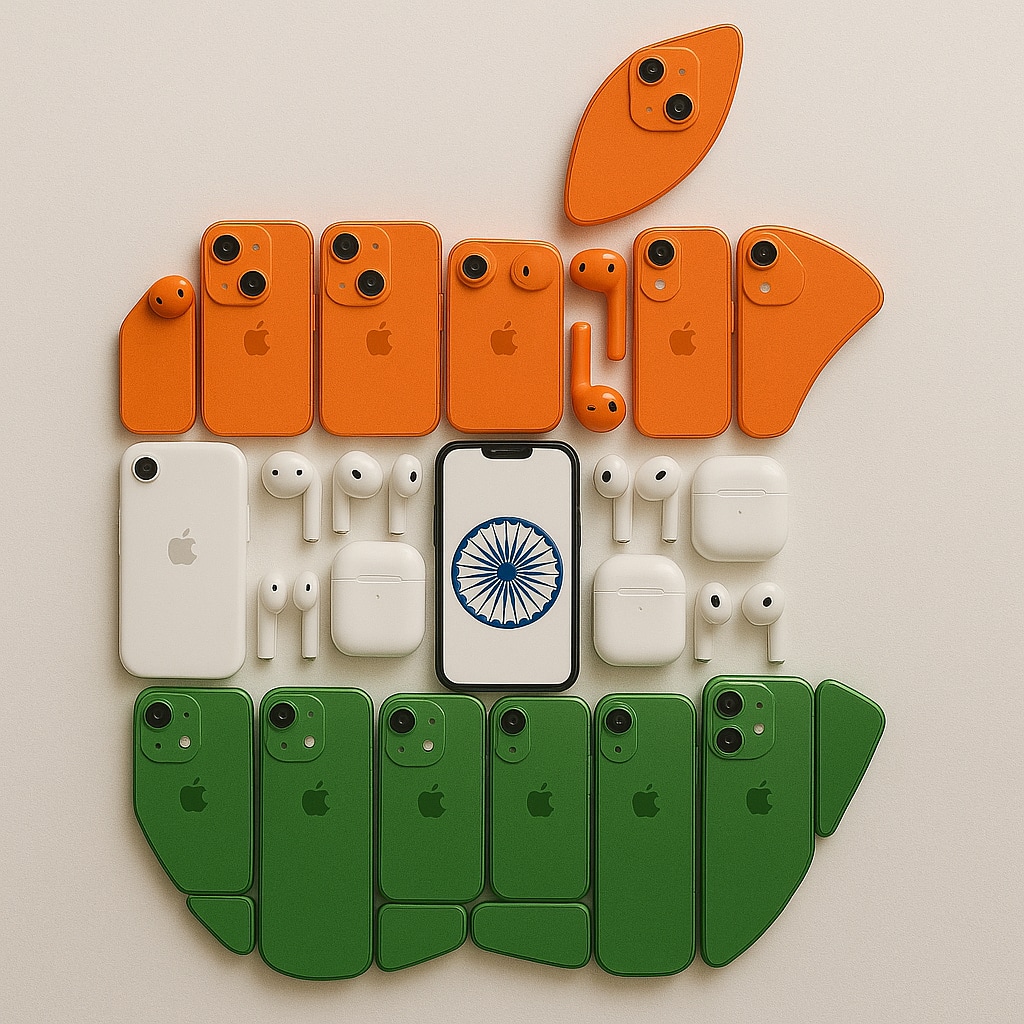



US President Donald Trump is once again pushing for Apple to manufacture iPhones in the United States. In a post on Truth Social, Trump demanded that Apple and other smartphone makers like Samsung shift all production of devices sold in the US to American soil—or face a 25% import tariff. “I have long ago informed Tim Cook of Apple that I expect their iPhone’s that will be sold in the United States of America will be manufactured and built in the United States, not India, or anyplace else,” the US president said in a post on Truth Social. “If that is not the case, a Tariff of at least 25% must be paid by Apple to the US,” he added.
But despite the political pressure, economic nationalism, and the optics of a “Made in the USA” iPhone, the reality is far more complicated. In short: Apple can’t do it—at least not easily, quickly, or cheaply.
The China factor: Scale and speed
Over 80% of Apple products are made in China, thanks to a sophisticated, massive, and highly agile manufacturing ecosystem. The country’s ability to recruit, house, and rotate hundreds of thousands of workers seasonally is a crucial part of Apple’s annual iPhone rollout. Foxconn, Apple’s largest supplier, can hire 50,000 new workers in a matter of weeks and has the infrastructure to support them with dorms, canteens, and transport.
This level of scale simply doesn’t exist in the US. The American manufacturing workforce is smaller, more regulated, and significantly more expensive. For example, California’s minimum wage is $16.50/hour. In comparison, Foxconn paid Chinese workers $3.63/hour during iPhone 16’s production surge, with additional signing bonuses. Labor cost alone would dramatically increase the price of an American-made iPhone, claim experts.
The skills gap
According to Apple CEO Tim Cook, the US doesn’t just lack the labor force—it also lacks the right kind of workers. In a 2017 interview, Cook highlighted the shortage of “tooling engineers” in the U.S., the specialized workers who turn Apple’s digital blueprints into physical products. In China, Cook said, a meeting of tooling engineers could fill several football fields. In the U.S.? One room, maybe.
This lack of skilled manufacturing talent makes it nearly impossible to replicate China’s seamless hardware supply chain in America.
Even if Apple managed to assemble iPhones in the US, the vast majority of iPhone components are still made in Asia. The processor comes from Taiwan Semiconductor Manufacturing Co. (TSMC) in Taiwan, the displays from Samsung and LG in South Korea, and other key parts from Chinese suppliers.
Unless Apple could bring the entire supply chain to U.S. shores—a task that would likely take over a decade and tens of billions of dollars—those parts would still need to be imported. And thanks to Trump’s tariffs, many of them would be taxed at rates as high as 145%, unless Apple secures individual waivers.
 Tim Cook
Tim Cook
Failed precedents
Trump already tried to bring electronics manufacturing stateside in his first term. Foxconn announced a $10 billion investment in Wisconsin in 2017, promising 13,000 jobs. It ultimately created only 1,454, mostly unrelated to electronics. Apple was never officially part of the plan, but Trump repeatedly claimed it would build “three big beautiful plants.” That never happened.
Apple’s attempt to manufacture iPhones in Brazil also failed to deliver on cost efficiency. Despite a $12 billion investment, Brazilian-made iPhones cost nearly double their Chinese counterparts due to imported parts and higher local costs.
Tim Cook’s strategy: Engage and delay
Unlike Steve Jobs, who bluntly told Barack Obama that “those jobs aren’t coming back,” Tim Cook has chosen diplomacy. Apple has invested $500 billion in the US in areas like AI and chip production and assembled some Mac Pros in Texas. This has helped the company negotiate tariff exemptions in the past. But Cook has never publicly committed to building iPhones in the US because he knows it’s not feasible.
The India angle
Apple’s shift toward iPhone production in India isn’t just about diversifying supply chains. It is also about taxes and tapping into a fast-growing market. A few years ago, India imposed steep import duties on smartphones made abroad. For Apple, that made it nearly impossible to price iPhones competitively in a country that was rapidly becoming the world’s second-largest smartphone market. The solution? Assemble the phones in India.
But this move wasn’t purely commercial. India boasts a large population of engineers, eager factory workers, and a government willing to offer subsidies and incentives to lure high-tech manufacturing. For Apple, that made India an appealing option—not just to serve local demand, but also to blunt the impact of US tariffs and global supply chain risk. Indi
 Apple India
Apple India
However, the reality of Apple’s “Made in India” iPhones is more nuanced. The Indian facilities largely handle final assembly. That means the truly complex parts — like the display panels and Face ID modules — are still made in China. These components arrive in India mostly finished and are snapped together to complete the iPhone. It’s more of an assembly line than full-fledged manufacturing.
This strategy allows Apple to label its iPhones as “Assembled in India,” satisfying local production requirements and sidestepping some US import tariffs. But it doesn’t meaningfully reduce Apple’s reliance on China. The supply chains, tooling, and know-how that power the guts of every iPhone are still firmly rooted there.
Bottom line
Building iPhones in the US would require massive investments in workforce development, supply chain reengineering, and factory infrastructure. Even then, American-made iPhones would likely cost nearly twice as much. While the idea of a US-built iPhone is politically appealing, it’s economically — and logistically — out of reach for now.

Discover the latest Business News, Sensex, and Nifty updates. Obtain Personal Finance insights, tax queries, and expert opinions on Moneycontrol or download the Moneycontrol App to stay updated!
Find the best of Al News in one place, specially curated for you every weekend.
Stay on top of the latest tech trends and biggest startup news.